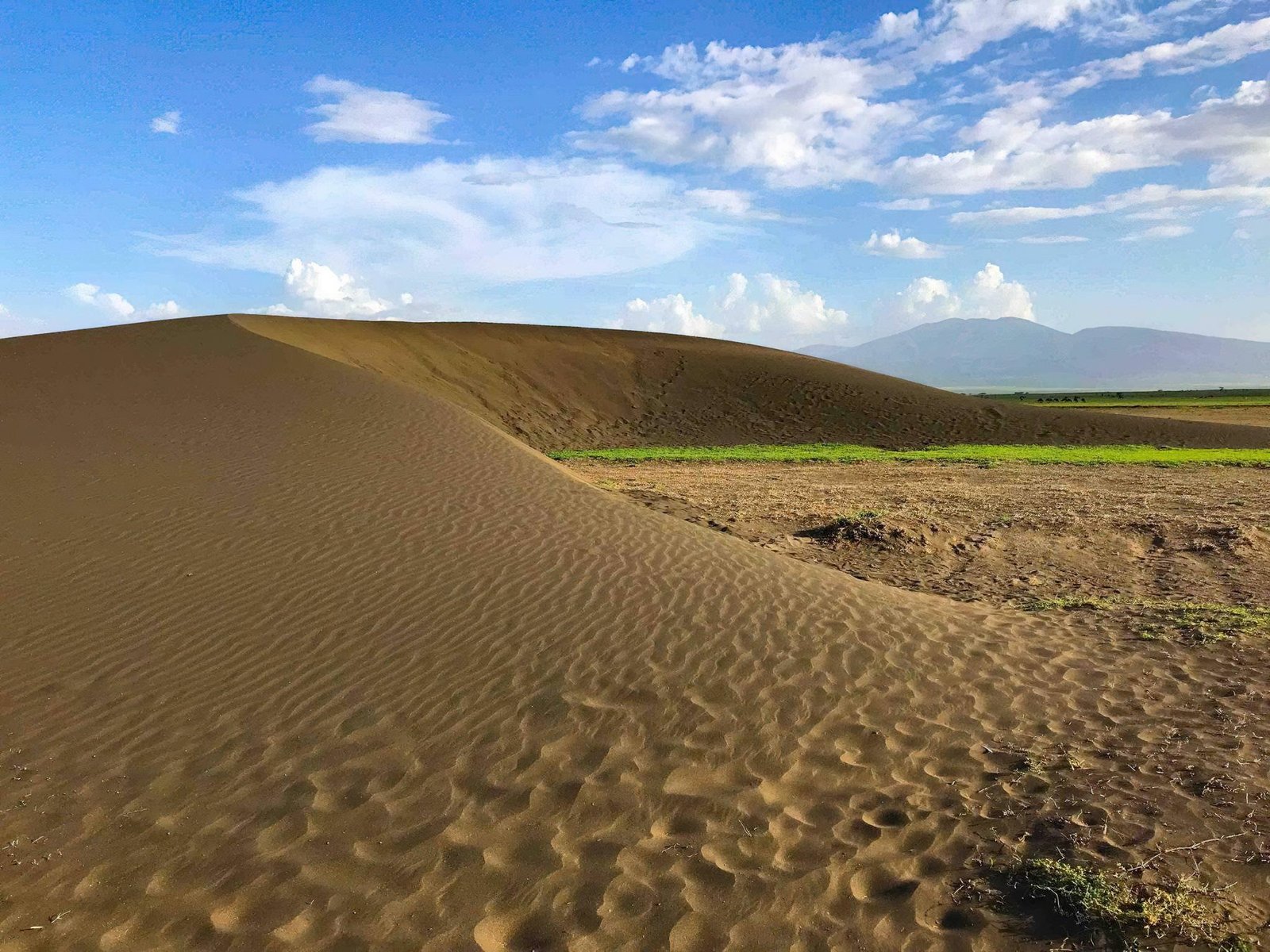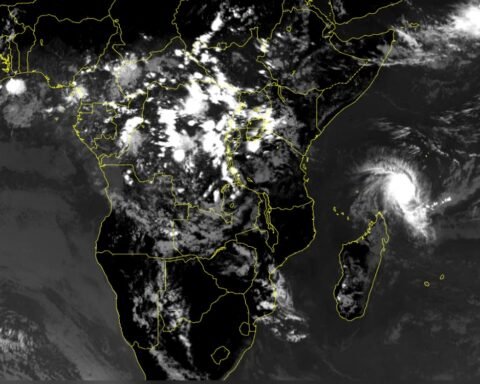Beneath the vast skies of East Africa’s Serengeti, where wildebeests migrate and lions rule, there exists a silent traveler moving across the land—not an animal, not a person, but a living dune known as the Shifting Sands.
Just 12 kilometers northwest of the famous Olduvai Gorge—a key site in the story of human evolution—and about 2 kilometers from the gorge’s edge, the Shifting Sands stand as one of the world’s rarest geological phenomena. Formed from volcanic ash, this crescent-shaped dune slowly glides westward at a steady pace of about 15 to 29 meters each year, driven only by the winds.
The dark sands are believed to have originated from the explosive eruptions of Ol Doinyo Lengai—an active stratovolcano sacred to the Maasai people and often referred to as the “Mountain of God.” Over centuries, volcanic eruptions deposited fine ash across the region. As the lighter particles were eroded and swept away by the wind, the heavier, iron-rich ash remained and slowly formed the Shifting Sands.
“This dune is magnetic,” explains a guide at the Olduvai Gorge Museum. “Literally. You can take a magnet and watch the particles cling to it.”
The dune’s movement is not just a wonder to behold—it’s a live experiment in the interaction between climate, geology, and time.
Geologists refer to this as an aeolian landform, shaped by the persistent force of wind. What’s rare here is the composition and cohesiveness of the dune—held together by magnetic minerals like magnetite—and the fact that it moves in a unified form, retaining its crescent shape even as it creeps across the plain.
Satellite imagery and GPS tracking have been used to study its pattern of movement over the decades. The result is a fascinating blend of natural history and modern science, unfolding in one of the world’s most ecologically and archaeologically rich regions.
Also Read; Tanzania Embarks on Nuclear Energy Future
To the indigenous Maasai communities who live nearby, the Shifting Sands hold spiritual meaning. Some believe the dune is alive—sent by the gods and constantly in motion as a form of divine communication. Others believe it follows ancient trails of cattle herds or the shadow of ancestors.
These oral traditions are not just folklore—they form a critical part of Tanzania’s intangible cultural heritage.
Interestingly, the dune’s migration intersects with one of the most vital archaeological landscapes in the world. Olduvai Gorge has produced fossils of early hominins like Paranthropus boisei and Homo habilis, offering vital clues about human evolution. As the dune passes over new terrain, it may help preserve buried fossils—or, in some cases, conceal important research areas.
Biologists also study how the dune impacts vegetation cover and animal behavior. As it moves, it temporarily buries grass and disrupts grazing zones for animals such as zebras, gazelles, and wildebeests.
For eco-tourists, photographers, and geology enthusiasts, the Shifting Sands offer an experience unlike any other in Africa. It’s best visited during the dry season, when the contrasting colors of the black dune and golden plains are at their most vivid.
The site is accessible from the Ngorongoro gate, with a guided visit often paired with stops at the museum, Maasai cultural villages, and the nearby Ngorongoro Crater.







